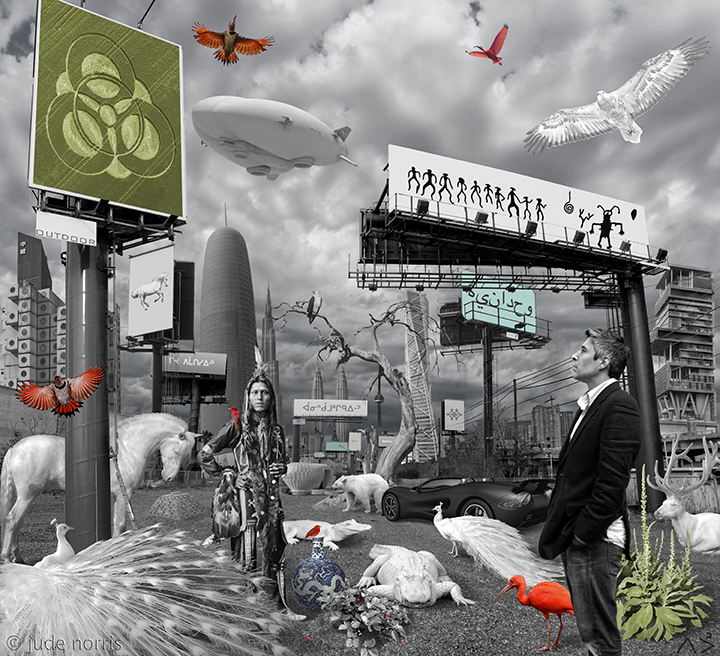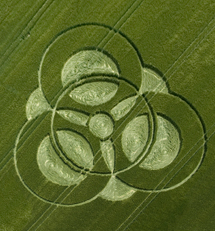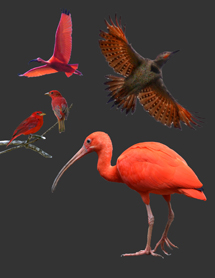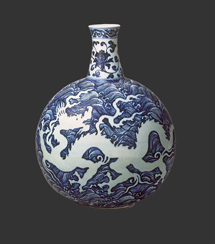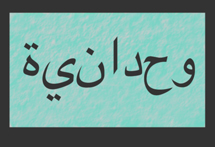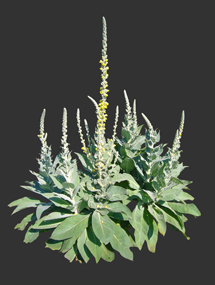PLEASE CLICK ON IMAGE TO ENLARGE & VIEW IN LIGHTBOX
INFORMATION ON LANDSCAPE ELEMENTS:
animals, objects, & people
K. J. McKusker (Plains Cree Nation) right foreground
Designer, digital marketer & entrepreneur (Toronto)
DustMaker aka Pete Mitchell (Ponca Nation) left foreground
From a photo by FA RineHart 1898.
Sacred White Animals:
Albino or Spirit peacocks (2)
Albino or Spirit Alligators (2)
White Spirit Horse
Albino Andalusian
Albino or Spirit Elk
Spirit Bear
Spirit bears are white colored brown bears found in the rainforest in the northwest coast of North America.
In addition to the sacred White Buffalo, many white animals have begun to appear all over the world, in many species. Chief Arvol Looking Horse, traditional leader of the Lakota clan of the Sioux nation and 19th generation Keeper of the White Buffalo Calf Bundle, has spoken about the increased appearance of white animals, as they are also part of the White Buffalo Calf woman’s prophecy.
They are showing themselves to us to get our attention, and they herald a time of great urgency for the Earth and humanity as a whole. When they appear, there will be a time of great change – earth changes and climate changes.
As Arvol says, these animals and this time are a call to humanity to live in spiritual unity. “We will have to work together to get through the intense challenges of the changes. We have to come together with good hearts, and good minds. We are going to make a change and create history in the new millenium”.
Scott Alexander (King of AnimalDreaming.com) explains that “Albino animals have been revered in most cultures for centuries; venerated as omens of good fortune, fertility, plentiful rain and bountiful harvest. Some even describe them as being imbued with supernatural or magical powers, usually charged with extraordinary strength, speed, shape and size”.
Red Birds
In some Plains Cree Medicine Wheel teachings, red is the color associated with the North, Winter (my Cree/Anishnawbe name), Wisdom, the Buffalo (personified by the White Buffalo), and blood (as the life force). Red is also the color associated with Native Peoples.
Scarlet Ibis (in flight and bottom right foreground)
Scarlet ibis live in South America and the Caribbean Islands. They are red with black-tipped wings.
The scarlet ibis is symbolically related to community. They live in flocks of thirty or more and are communally-minded when searching for food and protecting their young. For safety, they sometimes gather in large flocks of thousands that may include numerous other species of birds.
In Native cultures, since the ibis is the last animal to take shelter or leave when a hurricane approaches, traditionally it is a symbol that danger is imminent. Their diet consists in large part of scarab beetles. Both ibis and scarab beetles were sacred symbols in ancient Egyptian culture.
Scarlet ibis numbers are decreasing in some areas, and in Brazil this bird is considered endangered.
Summer Tanagers (2)
These dramatically colored songbirds are part of the cardinal family.
Their migratory range includes the southern United States, Mexico and South America.
As spiritual messengers, red cardinals are associated with the female realm and relationships, and can be messengers of relatives in the Spirit World and/or protectors.
Red-Shafted Northern Flicker (2, in flight)
The Northern Flicker is a woodpecker native to most of North America, parts of Central America, Cuba, and the cayman islands.
Traditionally, these birds are also connected with the presence of our Ancestors, and seen to bring good luck and healing. Also, because of the the drumming action they use to get insects from trees, they’re associated with stimulation of chakras of the head area and the pineal gland, which can help to awaken and connect us spiritually/to our highest selves. These things are aspects of feminine energy and realms. Their excellence as drummers also connects them with the feminine through the drumbeat, which represents the heartbeat of Mother Earth. The beautifully patterned red and black feathers on flicker wings are associated through some Indigenous stories with fire, and are a prized addition to many pow-wow dancer’s regalia.
Pile of Gold Bullion (left background)
Gold is one of the 92 naturally occurring elements found on earth. It is attractive in color and brightness, durable to the point of virtual indestructibility, highly malleable, and usually found in nature in a comparatively pure form.
Gold, like no other metal, has a fascinating history and a special place in the world. For thousands of years it has been used as an ornament of kings, an offering to the spirit world, an element of ritual, a currency and standard for global currencies. More recently it has been used in a wide range of technical and medical applications. It is a remarkable and rare metal with an unparalleled combination of chemical and physical properties.
It was no mere accident of history that the preference of tribal cultures, as well as ancient and modern civilizations, was and is to use gold as money. Since ancient times people have viewed gold as the perfect substance. Gold’s essential chemical composition reveals perfect integrity and homogeneity (uniform nature). It is extremely dense, one of the heaviest of all metals. And it is fungible, as pure gold is the same no matter where it is found.
There is no known natural substance that can destroy gold, therefore it doesn’t tarnish or corrode in normal use. Gold is also an excellent conductor of heat and electricity.
In addition, gold is extremely malleable and ductile. It is said gold can be drawn out so thin that a single ounce could be made to stretch a continuous length of 35 miles. It can be pounded so thin that it is translucent, yet still remain intact as a solid sheet. It has been said that sheets of gold can be made so thin that it would take a quarter of a million of them stacked one on top of the other to make a pile just one inch tall! Thin sheets of gold such as these have the distinctive quality of allowing sunlight to pass through, yet they will reflect off a large portion of the sun’s infrared rays (heat).
For this reason, thin layers of gold are now being used in the window glass found in many of today’s modern skyscrapers to help save on the tremendous costs of energy necessary to keep the interior of such buildings cool during the hot summer months. Similar films of gold have also been used in the face shields of helmets used by astronauts to reflect off much of the increased bombardment of infrared rays which occurs in space.
hover here for more info on gold
Ming Dynasty Porcelain Chinese Dragon Vase
circa1403-1424
Blue-and-white porcelain flat vase with dragon pattern of Ming Dynasty,
Palace Museum, Bejiing
As a mythological symbol, the Chinese dragon, known as the ‘Long’, dates back to at least 3000 BC. It comes in varying forms, but often has a horse’s head, a deer’s antlers, a snake’s body, a fish’s scales and eagle’s claws or tiger’s paws. It usually clutches a pearl, symbolizing its supernatural powers.
The Chinese ascribe various societal and divine attributes to the dragon. The Ancient Chinese Dragon is one of the ultimate symbols of cosmic Chi (energy). There are nine major types of Chinese dragons, as well as dragons of different earth elements (such as wood, metal, etc) for each dragon year. The Chinese dragons also appear in a number of colours, including red, gold, turquoise or white.
The Chinese Dragon symbolizes happiness, immortality, procreation, fertility and activity. It is a sign of auspiciousness and wealth among the people. The dragon is understood to be a beneficent and gracious creature, and is worshiped as the divine ruler of Lakes, Rivers and Seas. According to Chinese mythology, dragons lived under the surface of the Earth and only visited the world in the second month of the Chinese calendar to cause rain and thunder. They are said to ward off evil spirits, protect the innocent and bestow safety to all that hold his emblem. In addition, dragons are credited with the transportation of humans to the celestial realms after death.
The Chinese Dragon is as the symbol of male, or ‘Yang’. It’s less known female counterpart is the Phoenix. Together, the Dragon and Phoenix symbolize Yin and Yang together: perfect balance.
The Year of the Dragon is one of the most revered years of the Chinese New Year calendar. The Year of the Dragon is associated with the changes of Spring and new beginnings. It is like a flowing river, in which things happen quickly. The Dragon marks progression, perseverance and auspiciousness. Because of the sign’s association with rapid changes and the unexpected, it can bring storms, floods and unpredictable events. 2012 is the year of the Water Dragon.
The turquoise Chinese dragon was also the symbol of China’s feudal monarchy, representing the emperor’s power during the years of China’s feudal system.
plant medicine & trees
Strawberry plant
Traditional North American female-energy plant medicine. Treatment for numerous ailments, including addiction.
Mullein
Native to Europe, Asia and parts of Africa. Now found throughout North America.
Medicinal uses include treatment of respiratory problems, such as chest colds, bronchitis and asthma, strengthening bowels, diarrhea, hemorrhoids, colic, burns, earache & discharge from the ear. Mullein’s anti-bacterial properties make it effective in treating infections & even cold-sores. A poultice can also be used for bruises and to relieve arthritic and rheumatic conditions. In addition, has a calming effect and can be used as a sleep aid.
Used in Europe for lamp wicks and candles. Roman soldiers dipped the flower stalks in tallow to make torches. Also for driving away & safeguarding against evil spirits and magic in both Europe and Asia.
Cottonwood Tree (right background) Similkameen Reservation, BC
This is an old standing deadwood tree in one of the areas the artist often calls home.
transportation
Scorpion ‘hydrogen-hybrid’ sports car
Made by Texas-based Ronn Motor Company, the Scorpion has a hydrogen injection, Water4Gas or HHO engine. It can achieve 0-60 mph in just 3.5 seconds and gets 40 miles per gallon.
SkyTug hybrid airship
Designer: for it by Lockheed Martin’s Skunk Works.
Produced by Aviation Capital Enterprises, Calgary.
For operators in the oil and gas and other sectors that want to lift heavy and bulky loads long distances in remote or inaccessible regions. A less expensive and more environmental alternative to building short-lived temporary roads or billion-dollar permanent roads. Heavier-than-air, the Skytug uses static lift from helium bouyancy, supplemented by aerodynamic lift in forward flight and vectored thrust for takeoff and landing.
billboard words & images (left to right)
Crop Circle billboard (left foreground)
Crop circle in New Farm, near Chiseldon, UK. Appeared June 5, 2009.
Cree Good Life billboard (left mid-ground)
Says ‘good life’ or ‘good behavior’ in Plains Cree language syllabics
Cree Connection billboard (middle skyline)
Says ‘the act of connection’ in Plains Cree language syllabics
Arabic Oneness billboard وحدانية (right mid-ground)
Says ‘oneness’ in Arabic.
Gobustan Rock Art Billboard (right foreground)
Based on Rock Drawings @ Gobustan State Reserve, Azerbaijan,
circa 12th – 18th century BC.
There are over 6,000 petroglyphs at Gobustan (also known as Gobustan Rock Art Cultural Landscape) dating back 5,000 – 20,000 years.
pod architecture
Cocoon FS portable pavillion
created by Pohl Architects
skyline architecture
Nakagin Capsule Tower Tokyo, Japan
Architect: Kisho Kurokawa. Completed 1972.
Plans are in place to demolish & rebuild.
Burj Qatar/Doha Tower Doha, Qatar
Architect: Jean Nouvel. Completed 2010. 760 ft (230m)
Burj Khalifa Dubai, United Arab Emirates
Design architect, Adrian Smith. Completed 2010.
The tallest man-made structure in the world, at 2,723 ft (829.84 m).
CN Tower Toronto
1,815.4 ft. Completed 1976.
Architect: John Andrews/WZMH Architects
Turning Torso Malmo, Sweden
190 m (623 ft). Completed 2005.
Architect: Santiago Calatrava
Antilla House Mumbai, India
Architect: Perkins & Will. Completed 2010.
The most expensive house in the world. 27-floor personal home of Mukesh Ambani.
When you have finished your journey through the Response-Hive City,
I invite you to read the project description.
This artwork is available for sale as a limited edition, archival-quality inkjet print.
Please email Jude@JudeNorris.com for information & pricing.
